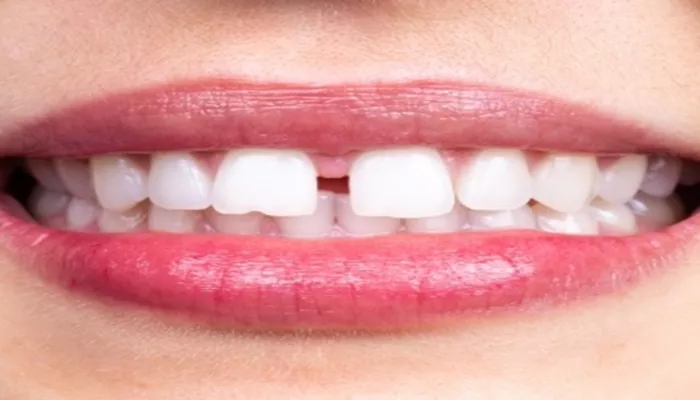Gaps between front teeth, known as diastemas, are common and often affect self-confidence. Invisalign, a modern orthodontic solution, offers a clear and comfortable way to close these spaces. Unlike traditional braces, Invisalign uses a series of custom aligners to shift teeth into position over time. The duration to close a front teeth gap with Invisalign varies based on the size of the gap, patient compliance, and oral health status. Conditions such as sensitive teeth, gingivitis, and gum disease can also influence treatment outcomes. This article explores the key factors that determine how long it takes to close a gap in the front teeth using Invisalign.
What Causes Gaps Between Front Teeth?
Diastemas can develop for several reasons:
Genetics — some individuals naturally have spacing issues.
Thumb sucking or tongue thrusting — these habits affect tooth alignment.
Jawbone structure — discrepancies in tooth and jaw size create gaps.
Missing teeth — loss of adjacent teeth can lead to shifting.
Gum disease — weakens bone support, causing gaps to form.
Understanding the root cause is crucial for effective Invisalign treatment planning.
How Invisalign Works
Invisalign aligners are clear trays custom-made for each patient. They apply gentle pressure to reposition teeth over time. Patients switch to a new aligner every 1–2 weeks, gradually closing gaps. Treatment must be consistent, with aligners worn 20–22 hours per day. Any deviation can delay progress.
Average Time to Close Front Teeth Gap
The time to close a front teeth gap with Invisalign depends on several factors. On average:
- Small gap (1–2 mm): 3–6 months
- Medium gap (2–4 mm): 6–12 months
- Large gap (over 4 mm): 12–18 months or more
These durations are estimates. An orthodontist can provide a personalized timeline after a detailed exam and 3D imaging.
Factors Affecting Treatment Time
Size and Location of the Gap
Smaller gaps between central incisors are quicker to fix than large or multiple gaps. Gaps accompanied by bite issues, like overbite or crossbite, require more time and additional aligners.
Patient Compliance
Invisalign requires discipline. Aligners should be worn nearly all day. Removal for eating or cleaning is fine, but extended breaks slow progress. Non-compliance is a common reason for delayed results.
Age of the Patient
Younger patients often respond faster to treatment. Adult bone density and dental history may result in slower movement, but Invisalign is still highly effective at all ages.
Oral Health Conditions
Issues like gingivitis and gum disease must be treated before starting Invisalign. Inflamed gums or periodontal disease can hinder tooth movement and compromise long-term outcomes. Likewise, sensitive teeth may need special care during treatment.
Invisalign for Sensitive Teeth
Sensitive teeth are not a barrier to Invisalign, but they can cause discomfort during treatment. Aligners apply pressure, which may intensify sensitivity temporarily. Fluoride treatments, desensitizing toothpaste, and avoiding acidic foods can help manage symptoms. Dentists often recommend gradual pressure changes or adjustments to aligner trays to reduce discomfort.
Gingivitis and Gum Disease Considerations
Patients with gingivitis or gum disease must stabilize their condition before beginning Invisalign. Active gum disease can weaken the supporting bone structure. This increases the risk of tooth mobility or failure during movement. Deep cleaning procedures like scaling and root planing may be necessary. During treatment, maintaining strict oral hygiene is essential. Regular dental checkups ensure the gums remain healthy throughout the process.
Steps in Invisalign Treatment for Front Teeth Gaps
1. Consultation and Imaging
A comprehensive exam includes X-rays, photographs, and 3D scanning. These tools help map the tooth movement path.
2. Treatment Plan
The orthodontist outlines how each aligner will move the teeth. They estimate the treatment duration and discuss expectations.
3. Aligner Fabrication
Aligners are custom-made and delivered in sets. Each one builds on the last to incrementally close the gap.
4. Monitoring and Adjustments
Patients visit the dentist every 6–8 weeks. Adjustments ensure progress is on track. If needed, refinements or new aligners are added.
5. Retention Phase
Once the gap is closed, retainers prevent teeth from shifting back. Long-term use is crucial to preserve results.
Common Challenges and Solutions
Slow Progress
Caused by poor compliance, missed appointments, or incorrect wear. Solution: follow the plan strictly and communicate with your dentist.
Discomfort or Irritation
Aligners may cause mild soreness. Solution: use orthodontic wax, cold compresses, or over-the-counter pain relief as needed.
Relapse After Treatment
Teeth can shift back post-treatment. Solution: consistent retainer use is essential for maintaining alignment.
How to Maintain Oral Health During Invisalign
Brush after every meal to prevent plaque buildup.
Floss daily — use threaders or water flossers for ease.
Clean aligners regularly using Invisalign cleaner or mild soap.
Schedule dental cleanings every 6 months or as advised.
Monitor for signs of gingivitis: bleeding, redness, swelling.
Good hygiene reduces the risk of sensitive teeth and gum disease during Invisalign use.
Comparing Invisalign to Traditional Braces
Invisalign: Discreet, removable, comfortable. Often faster for minor gaps.
Braces: Effective for complex cases, but visible and less flexible.
For front teeth gaps, Invisalign is often preferred due to aesthetics and convenience.
Who Is a Good Candidate for Invisalign?
- Mild to moderate spacing issues
- Healthy gums and bone structure
- Commitment to wearing aligners properly
- No untreated gum disease or severe gingivitis
Severe spacing or bite issues may require alternative orthodontic methods.
Cost and Insurance Coverage
Invisalign treatment typically costs between $3,000–$7,000 in the U.S. Front teeth gaps often require shorter treatments, reducing costs. Many insurance plans offer partial coverage. Flexible spending accounts (FSA) or health savings accounts (HSA) can also be used.
Conclusion
Closing a front teeth gap with Invisalign is effective, discreet, and often faster than traditional braces. The treatment timeline typically ranges from 3 to 12 months, depending on the gap size and patient habits. Success depends on compliance, oral hygiene, and overall dental health. Addressing issues like gingivitis, gum disease, and sensitive teeth before and during treatment is vital. With proper care and monitoring, Invisalign delivers lasting, satisfying results.

